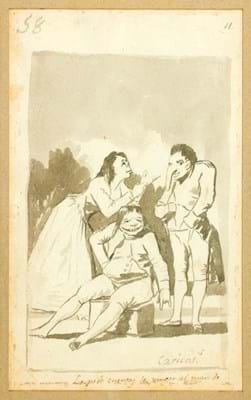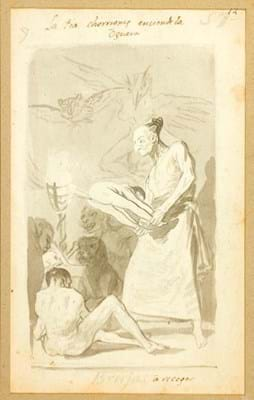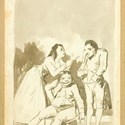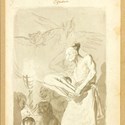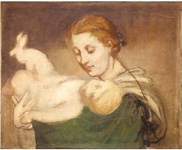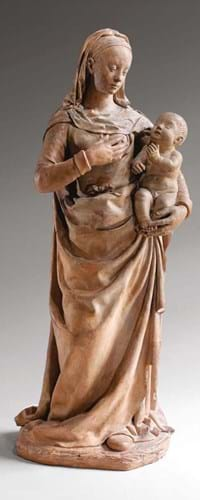
Michel Colombe’s terracotta statue of the Virgin and Child from c.1500 pre-empted by the Louvre for €3.7m (£3.2m) at Auction Art Rémy le Fur.
Image: Auction Art Rémy le Fur/ Drouot
A rare French terracotta by a late gothic/early Renaissance sculptor was the toast of a single-owner collection offered at Drouot when it was pre-empted by the Louvre for €3.7m (£3.2m).
The collection was part of a three-day auction held by Auction Art Rémy le Fur (27% buyer’s premium). The 3ft 4in (1.02m) high statue of the Virgin and Child is by Michel Colombe (c.1430-1515) who was born in Bourges and worked in the Loire region.
It has featured in two recent exhibitions: France 1500 entre Moyen Age et Renaissance, held at the Grand Palais from 2010-11, and Tours 1500 capitale des arts, staged at the Musée des beaux arts in the French city in 2012.
Colombe is best known for his work on the tomb of François II of Brittany in Nantes Cathedral which was designed by Jean Perréal but executed by him.
However, despite a long career, little of his output is now known. According to the Louvre the tomb is one of only a handful of documented works by him; others being the altarpiece of St George from the Chapel of the Château de Gaillon, which is now in the Louvre, and a commemorative medal of the entry of François II into Tours in 1500 which is in the cabinet des Médailles of the Bibliothèque nationale de France.
This terracotta was firmly attributed to Colombe thanks to the 2010 exhibition at the Grand Palais by the art historian and curator Geneviève Bresc-Bautier on the basis of comparison to the statues of virtues on Louis XII’s tomb.
It is dated to the later part of the artist’s career, c.1500, and is a fine example of early Renaissance sculpture, realistically detailed, showing the Virgin with a high shaved forehead wearing a closefitting dress conforming to the fashions of the period about to breast-feed her child.
The statue was made for the tympanum of the entrance door to the chapel of the Château de La Carte in Ballan-Miré in the départment of Indre et Loire. This was was built from 1497 for Jacques de Beaune (c.1455-1527) who came from a family of cloth merchants from Tours and was mayor of the city in 1498. He had a successful financial and administrative career at the French court until his disgrace and execution in 1528 and commissioned stained glass windows and tapestries for several churches in the region.
The Virgin and Child was sold from the Château de la Carte but was bought back and placed there again prior to 1901. The statue was then sold and placed in the chapel of another château, in Marne, before being sold again in Paris in February, 1975. On July 2, 1976, after two unsuccessful attempts by the Louvre to acquire the work, it was classed as a monument historique in order to prevent its export.
The statue will now join the Gaillon altarpiece and works by Colombe’s nephew and successor Guiillame Regnault in the department of sculpture at the museum.
Wide-ranging selection
Two other lots from what was a very wide-ranging collection realised seven-figure prices. Together these three made up a substantial slice of the premium-inclusive total of nearly €12m realised by the auction held on November 29-30 and December 2.
One of these was a 9 x 5½in (23 x 14cm) double-sided sepia and wash leaf featuring ‘caricature’ or satirical drawings by Goya - Francisco Goya Lucientes (1746-1828) - which became another pre-emption by the Louvre.
This is a leaf from album B dating from 1796-7, one of a series of eight private albums of over 500 drawings which the artist produced.
The drawing to one side is a satirically risqué and grotesque scene titled in pen Le pide cuentas la mujer al marido. The other, La tia Chorriones enciende la hoguera (Aunt Chorriones lights the fire), shows a woman using a child as a pair of bellows and served as a source for number 69 of Goya’s famous Los Caprichos prints.
The private albums passed down to Goya’s son and grandson. The latter sold them to the painter Federico de Madrazo and during the 19th century they were broken up, rearranged and the drawings sold off, notably at an auction in Paris 1877, after which this particular work featured in the collections of Paul Meurice (sold at auction in 1906) and that of Alfred Stölin (a 1957 auction) before entering the private collection now offered by Auction Art in 1957.
Estimated at €800,000-1.2m, the Louvre pre-empted this at the hammer price of €1.5m (£1.3m) for its department of prints and drawings.
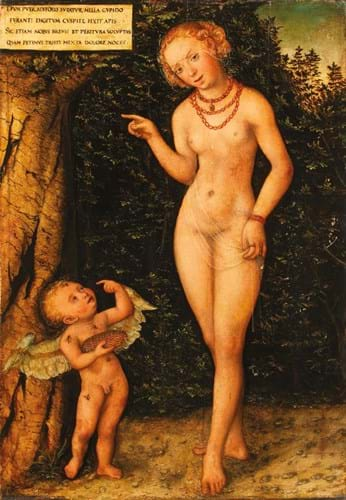
Lucas Cranach the younger’s oil on panel of Venus and Cupid the honey thief – €1.1m (£956,520) at Auction Art Rémy le Fur.
Image: Auction Art Rémy le Fur/Drouot
The second seven-figure price was the €1.1m (£956,520) paid by a private collector for a 20 x 12in (51 x 30cm) oil on panel of Venus and Cupid the honey thief by Lucas Cranach the younger (1515-86).
This is one of the favourite subjects produced in a number of versions by father and son Cranach the elder and younger. The Auction Art version, which is dated to c.1540-50 and was estimated at €1.5m-2.5m, features the Cranach winged dragon ‘signature’ used by both father and son in the upper left corner.
The painting formed part of the celebrated art collection of Prince Demidoff, which was dispersed at auction in Paris in 1863, after which it entered the collection of the Comte de Lambertye, sold at auction in 1868, and the Payelle collection, sold in 1978.
£1= €1.15


